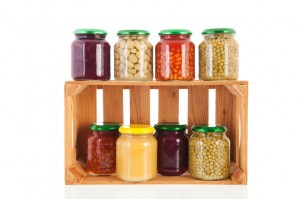Practical Emergency Food Storage
Emergency Food Storage does not need to be foreign or difficult. Many people become intimidated when the topic of Emergency Food Storage comes up. They do not know where to begin and envision an impossible up hill battle. There are some easy steps you can take to prepare for an emergency and the process does not need to be intimidating.
Begin Here
The first step in starting emergency food storage is to access the foods that you normally eat and stock up on those. It makes no sense to have a food supply made up of foods you do not eat or know how to prepare. When you buy a can of tuna, a box of pasta, or a bag of rice, simply buy a second one. If you can afford to buy multiple extra items, buy one each of different items rather that ten of the same. If you buy ten of the same item they will all reach their expiration date at the same time. Start out small. In the matter of a few weeks you will have built up a weeks worth of food storage and soon you will have enough for a month.
How to Store your Emergency Food Storage
How you store your food now becomes important. You have spent the last few weeks stocking up on items that have a long shelf life. It is important to realize that most foods have a limited shelf life and you must eat that food within a specified time or you just wasted your money. Organize your food so that you eat the oldest food first. There are commercial organizers you can buy to help you with this or you can simply put the newest foods at the back and move the older foods to the front. It is easier for you to do this if you keep the foods in your panty toward the front rather than keeping everything towards the back. This is what grocery stores do every day.
For the first month of food storage, we at MBIntel.net do not feel you need to buy commercial food storage items. These items are better suited for your longer food storage plans. When you buy these longer food storage items, you should only buy products you will actually use. Try to integrate some of these items into your meal planning on a regular basis. It will do you no good to have a years worth of freeze dried vegetables, dry beans, and wheat if you have no idea how to prepare these items and if your body is not used to eating them.
The important things to remember when starting an Emergency Food Storage plan is to begin small with foods you normally eat, organize your food to eat the oldest unexpired food first, and add longer term commercial food storage items into your regular diet. For more safety, security, and emergency preparedness information go to mbintel.net.

